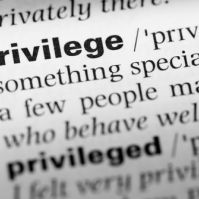 Historically, the church has not been a friendly place for LGBTQIA+ people. While many churches still have very strict parameters for inclusion, other communities of faith go out of their way to welcome as many people as possible. When you open your doors to include and affirm people all along the gender and sexuality spectrums, you communicate the all-encompassing love of God.
Historically, the church has not been a friendly place for LGBTQIA+ people. While many churches still have very strict parameters for inclusion, other communities of faith go out of their way to welcome as many people as possible. When you open your doors to include and affirm people all along the gender and sexuality spectrums, you communicate the all-encompassing love of God.
If your church is committed to not only welcoming but also affirming LGBTQIA+ people, you must make sure your actions match your invitation. Many LGBTQIA+ folks are scared due to current legislative initiatives to inhibit their rights or ignore their needs. As a result, they need more than just lip service from the church when it comes to affirming their identities and relationships.
Acknowledgment
Inclusion is not passive. You can't just put up a sign that says, "Everyone is welcome," and assume that all who read it will understand what you mean. Statements of affirmation must be explicit, and there are several ways to clarify your intentions on your website and other public spaces to those looking for a welcoming faith community:
- Declaring that your church affirms LGBTQIA+ people and relationships
- Committing to inclusive hiring practices for church staff and clergy
- Offering space and services for LGBTQIA+ weddings and ceremonies
- Partnering with organizations that work for LGBTQIA+ liberation
A well-rounded welcome statement may also need to address the role that the church has played in discrimination. Acknowledging the church's harmful history with the LGBTQIA+ community and publicly committing to change is the apology that many who have been hurt by the church need as part of their healing process. This step of reconciliation is especially important if you serve in a state where the political climate itself is not affirming. Showing that you understand their hesitation to trust any church is a good place to start.
Education
Affirmation goes beyond just being nice. Even the best intentions often produce harmful effects, especially if members of your church are unaware that many of the habits and practices they learned growing up in the church are rooted in oppression. Ongoing education is necessary to break free from patterns that no longer serve the loving and inclusive mission of your faith community.
Workshops and seminars can also help people understand why you are making changes in how you do things. For example, a class on proper pronoun usage and why it's important may encourage members to be more enthusiastic about including their pronouns on name tags and in introductions to visitors. Discussions about how to be an effective ally or make public spaces safer for LGBTQIA+ friends can also be enlightening.
Every ministry or small group in your church can get involved in learning more about inclusion. Your book club can include selections written by nonbinary authors. Your finance committee can propose a space in the budget for educational materials or community engagement with inclusive activist groups. When individuals and groups take on the responsibility of inclusion, your church can make a bigger impact.
Support
As you work to become more affirming, keep in mind that the LGBTQIA+ folks who show up may have specific needs. They may not have access to the healthcare or mental health services they need to thrive. If they have recently come out to their family or employer, they may need other practical support, such as housing or legal assistance, if their news wasn't received well. While your church may not be equipped to supply these needs directly, you can still be prepared to refer them to reliable local resources. It's kind to pray for them in times of trouble, but you must also back up your prayers with action.
It's wonderful when a church overcomes its history to take a stand against oppression and affirm its LGBTQIA+ members. Putting love into consistent practice is the key to ongoing success.



